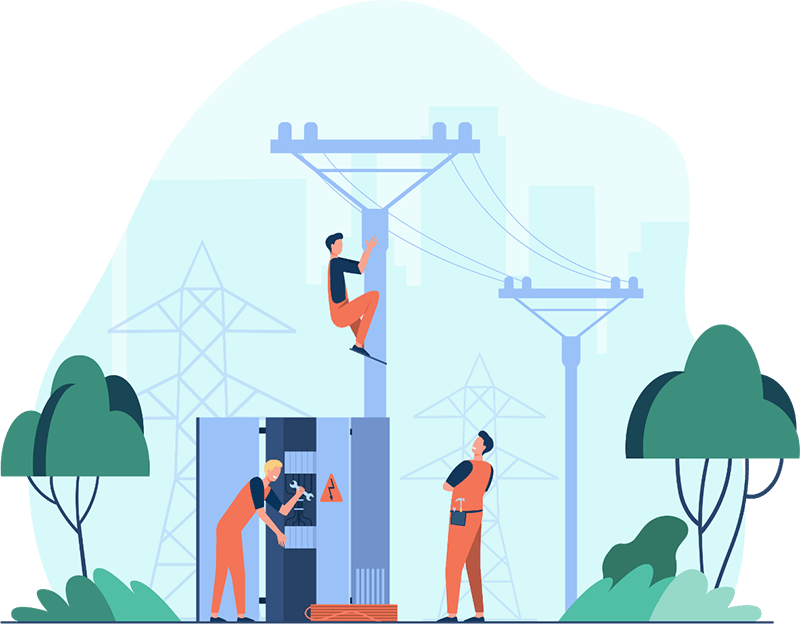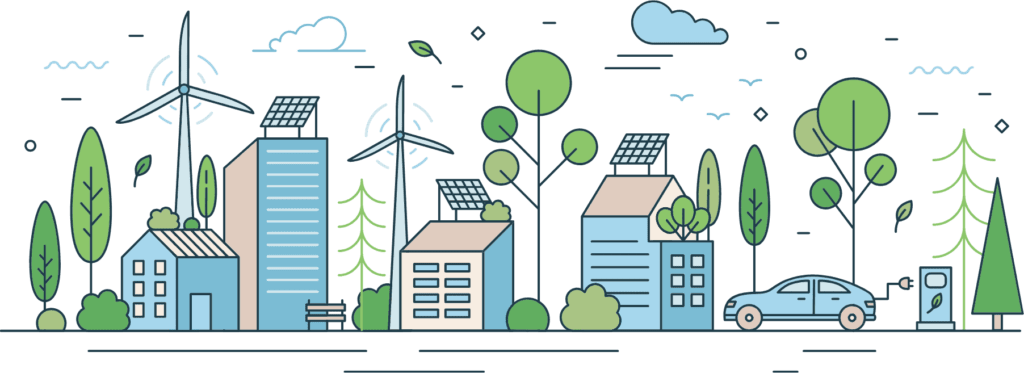
South Africa’s energy system faces a challenging balancing act between maintaining energy security, ensuring energy affordability, achieving economic growth, and meeting our 2050 net-zero commitments. To navigate the complexities of this transition, we need more than incremental fixes. This calls for the implementation of an integrated energy system – a robust framework that aligns our immediate priorities with our long-term vision of a decarbonised, inclusive, and resilient energy future.
If you have listened to, or partaken in, conversations about energy in South Africa, you may have noticed that those conversations revolve mostly around the supply of electricity. People generally talk about what technology is being used to generate power, what mix of generation technologies is required, and by when. But the energy sector is much broader than just supply!
South Africa’s energy sector requires an integrated energy system that takes into consideration:
Each element has interdependencies meaning if we change one thing in the system, it will have a knock-on effect on another/others and eventually impact South Africans like you.
An integrated system ensures that all parts of the energy sector work together, driving effective solutions that are both sustainable and efficient. Only by considering the whole system can we overcome the challenges in South Africa’s energy sector and create a future where energy is reliable, affordable, and accessible for all.
In South Africa, we need:
These four elements – supply, infrastructure, market reform and demand management — are interdependent, which is why we need an integrated approach when we look at how to Switch on, Mzansi




By 2035, we will have to:
Do you see why we need integrated solutions? We can’t increase the supply of power without market reform and the investment that will follow that.
Government can’t afford to fund all these investments, which means major changes in legislation and reforms are required to enable private investor confidence. This will reduce our level of country debt and transfer the investment risk to energy investors who compete to provide the best terms and conditions for South Africa.
We need to make sure that whenever we are discussing energy in South Africa the conversation includes all elements of the integrated energy system. That way we can direct the national energy conversation to focus on effective delivery and implementation in an integrated way.
That means we need to discuss and debate:

Integrated solutions are the only way to successfully
#EnergiseMzansi

Physical Address:
12 Desmond Street,
Kramerville, 2090, South Africa
Enquiries:
Email: info@energycouncil.org.za
© 2025 Energy Council of South Africa.
All rights reserved | Privacy Policy | Fraud and Unethical Conduct
| Cookie | Duration | Description |
|---|---|---|
| cookielawinfo-checkbox-analytics | 11 months | This cookie is set by GDPR Cookie Consent plugin. The cookie is used to store the user consent for the cookies in the category "Analytics". |
| cookielawinfo-checkbox-functional | 11 months | The cookie is set by GDPR cookie consent to record the user consent for the cookies in the category "Functional". |
| cookielawinfo-checkbox-necessary | 11 months | This cookie is set by GDPR Cookie Consent plugin. The cookies is used to store the user consent for the cookies in the category "Necessary". |
| cookielawinfo-checkbox-others | 11 months | This cookie is set by GDPR Cookie Consent plugin. The cookie is used to store the user consent for the cookies in the category "Other. |
| cookielawinfo-checkbox-performance | 11 months | This cookie is set by GDPR Cookie Consent plugin. The cookie is used to store the user consent for the cookies in the category "Performance". |
| viewed_cookie_policy | 11 months | The cookie is set by the GDPR Cookie Consent plugin and is used to store whether or not user has consented to the use of cookies. It does not store any personal data. |
A Power Purchase Agreement (PPA) is a long-term contract between a buyer and a supplier of electricity that defines the terms of the agreement.
Multi-market system – a hybrid market model designed to accommodate various defined transactions (market transactions, physical bilateral transactions and regulated transactions).
Scheduling supply to meet current demand for electricity
Electricity storage encompasses all technologies that can consume electricity (e.g., charge in times of oversupply) and return it later (e.g., discharge in times of undersupply).
The capacity factor is the ratio of the actual electrical energy output over a certain period of time to the maximum possible output if the power source was operating at full capacity all the time. Essentially, it illustrates the efficiency and dependability of an energy source.
A transmission grid is an interconnected network of electrical transmission lines that moves electricity from power plants to distribution systems and end users
Variable renewable energy (VRE) or intermittent renewable energy sources (IRES) are renewable energy sources that are not adjustable due to their fluctuating nature, such as wind power and solar power
Capital costs are fixed, one-time expenses incurred on the purchase of equipment used in the production of goods
The cost added by producing one additional unit of a product or service.
Renewable energy refers to energy generated from a source that is not depleted when used
Liquefied natural gas (LNG) is natural gas that has been cooled down to liquid form for ease and safety of non-pressurized storage or transport.
Republic of Mozambique Pipeline Investments Company
A petajoule (PJ) is a unit of energy measurement that is equal to one million billion joules (10 to the power 15). It can also be expressed as 278 gigawatt hours. One petajoule is equal to 31.60 million cubic meters of natural gas.
Dispatchable generation refers to sources of electricity that can be programmed on demand at the request of power grid operators, according to market needs. Dispatchable generators may adjust their power output according to an order.
Domestic gas is natural gas found underground within a county’s borders
Energy Availability Factor (EAF) = measure of generation performance, electricity available to be generated. EAF is the difference between the maximum availability and all unavailabilities expressed as a percentage
Particulates are microscopic particles of solid or liquid matter suspended in the air. Sources of particulate matter can be natural or anthropogenic. They have impacts on climate and precipitation that adversely affect human health, in ways additional to direct inhalation.
Nitric oxide (NO) and nitrogen dioxide (NO2) are two gases whose molecules are made of nitrogen and oxygen atoms. These nitrogen oxides contribute to the problem of air pollution, playing roles in the formation of both smog and acid rain. They are released into Earth’s atmosphere by both natural and human-generated sources.
Sulfur oxides are a group of molecules made of sulfur and oxygen atoms, such as sulfur dioxide (SO2) and sulfur trioxide (SO3). Sulfur oxides are pollutants that contribute to the formation of acid rain, as well as particulate pollution. Some are released into Earth’s atmosphere by natural sources, but most are the result of human activities.
Net Zero means cutting carbon emissions to a small amount of residual emissions that can be absorbed and durably stored by nature and other carbon dioxide removal measures, leaving zero in the atmosphere.
Nationally Determined Contributions are the commitments that countries make to reduce their greenhouse gas emissions as part of climate change mitigation.
The Paris Agreement is a legally binding international treaty on climate change. It was adopted by 196 Parties at the UN Climate Change Conference (COP21) in Paris, France, on 12 December 2015.
The energy trilemma is a framework that energy policymakers use to balance three objectives:
likely to receive funding
The EU’s Carbon Border Adjustment Mechanism (CBAM) is the EU’s tool to put a fair price on the carbon emitted during the production of carbon intensive goods that are entering the EU, and to encourage cleaner industrial production in non-EU countries
An integrated system brings together several elements to create single cohesive unit
Green hydrogen is hydrogen produced by the electrolysis of water, using renewable electricity. Production of green hydrogen causes significantly lower greenhouse gas emissions than production of grey hydrogen, which is derived from fossil fuels without carbon capture.